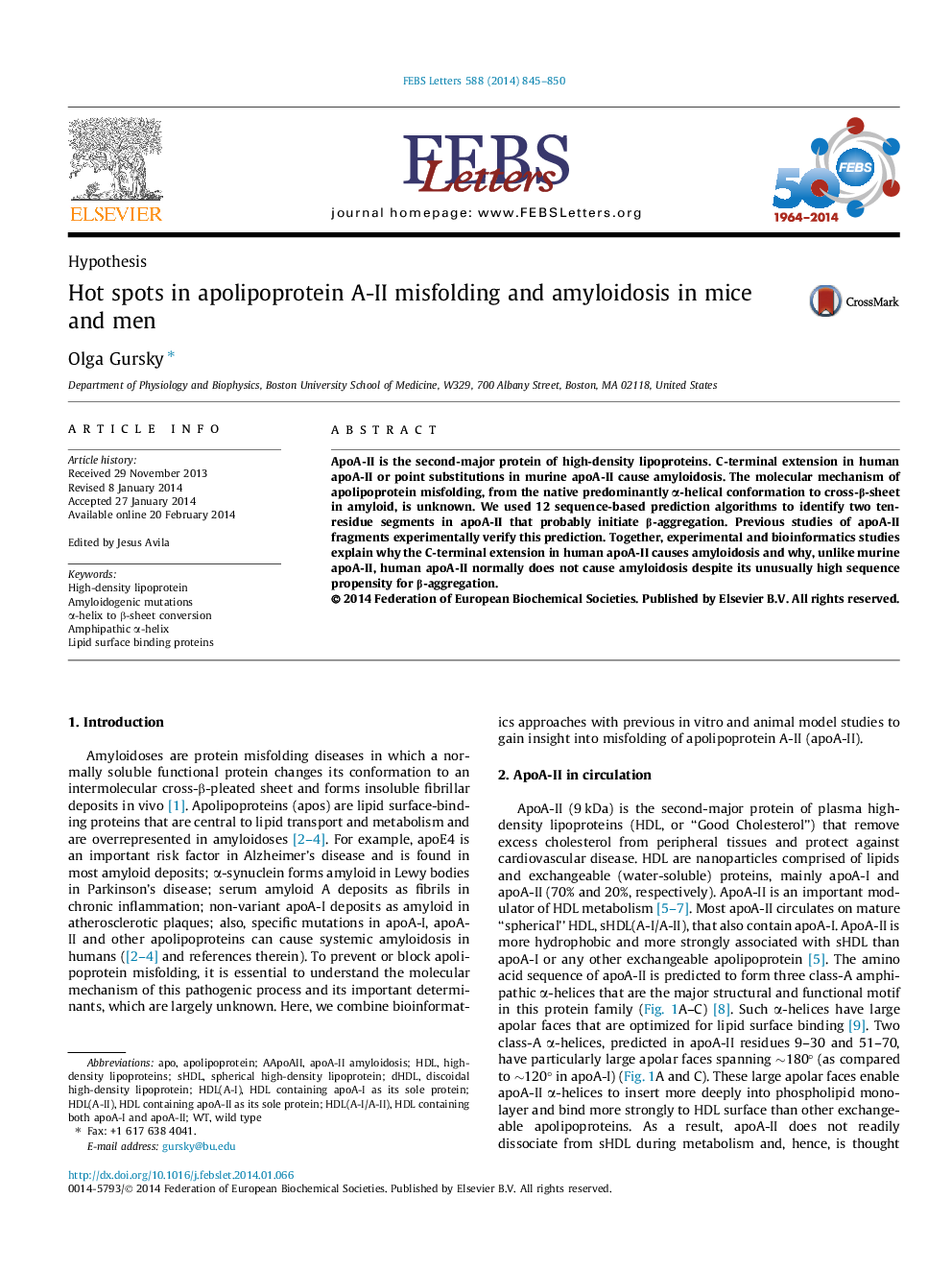| Article ID | Journal | Published Year | Pages | File Type |
|---|---|---|---|---|
| 10870483 | FEBS Letters | 2014 | 6 Pages |
Abstract
ApoA-II is the second-major protein of high-density lipoproteins. C-terminal extension in human apoA-II or point substitutions in murine apoA-II cause amyloidosis. The molecular mechanism of apolipoprotein misfolding, from the native predominantly α-helical conformation to cross-β-sheet in amyloid, is unknown. We used 12 sequence-based prediction algorithms to identify two ten-residue segments in apoA-II that probably initiate β-aggregation. Previous studies of apoA-II fragments experimentally verify this prediction. Together, experimental and bioinformatics studies explain why the C-terminal extension in human apoA-II causes amyloidosis and why, unlike murine apoA-II, human apoA-II normally does not cause amyloidosis despite its unusually high sequence propensity for β-aggregation.
Keywords
Related Topics
Life Sciences
Agricultural and Biological Sciences
Plant Science
Authors
Olga Gursky,
